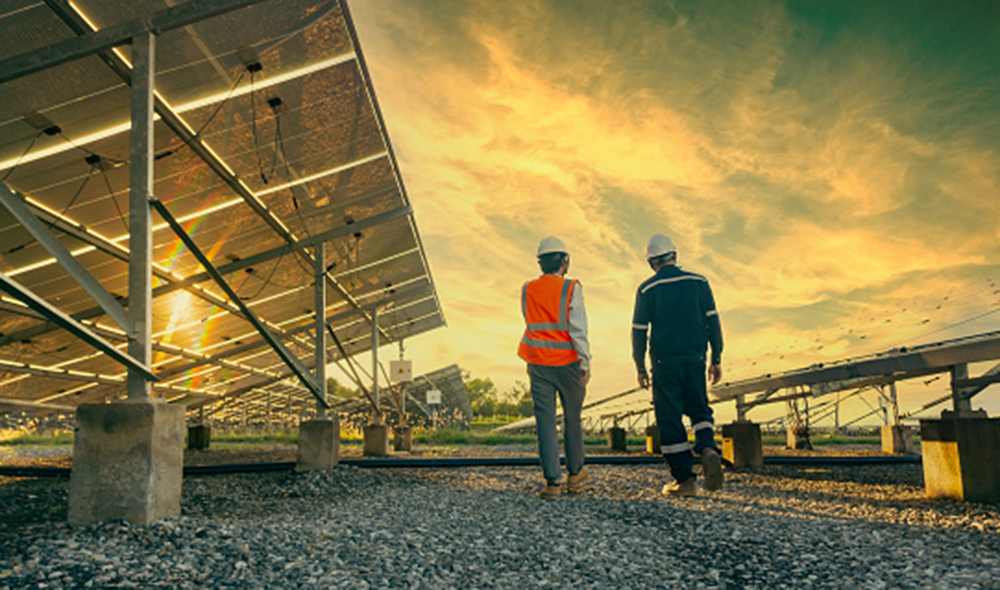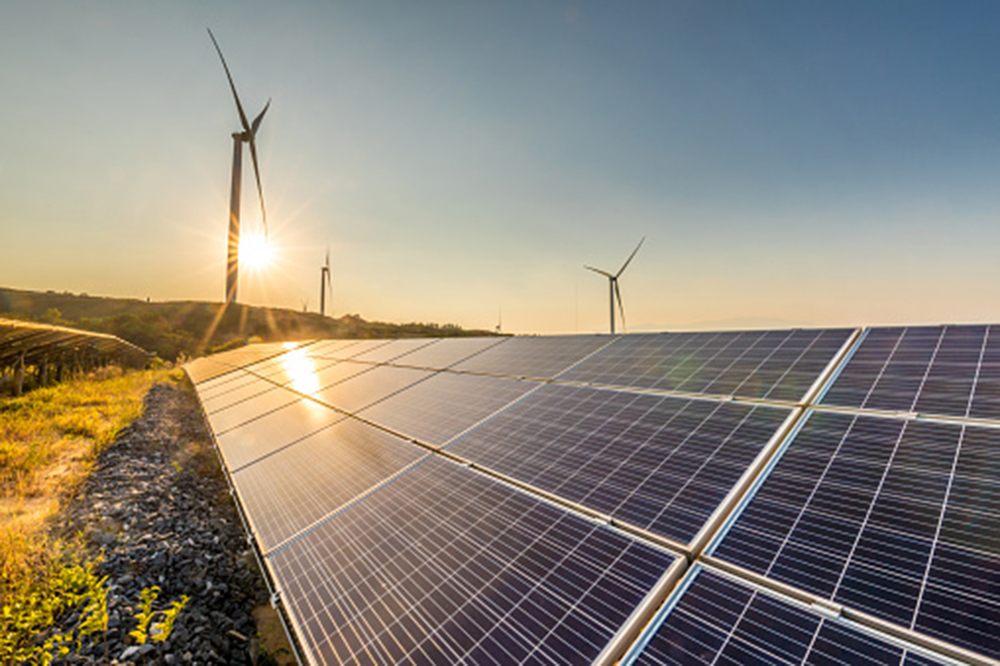Renewable Electricity Plans: Environment-Friendly Solutions

The world has crossed the point of no return when it comes to global warming. That’s what the experts say. This means that reversing the earth’s warming trends is close to impossible. However, we can still hope to hold back the temperature rise. How? By relying more on renewable energy sources that release less or no planet-warming carbon dioxide.
More power consumers are becoming advocates for the environment, prompting utility companies to include renewable green energy in their portfolios. Such a move benefits Mother Nature, so if you want to join the fight against climate change, turning to green energy plans is an excellent approach.
What is Green Energy?
Green energy is energy that originates from renewable sources. That is, sources that are infinite or can replenish themselves in less than a human lifetime. These include wind energy, solar power, biofuels, hydropower, and the like.
Some of the key features of renewable energy generators are: they’re sustainable, non-polluting, and accessible.
Types of Green Energy Sources
For an energy source to be considered green, it should not produce pollution when used in power generation. That’s why not all renewable energy suppliers can be regarded as totally green. For example, although biomass can be quickly replenished, it releases carbon dioxide when burned for fuel.
Let’s take a look at some of the world’s green energy sources.
Solar Power
Solar power comes from harnessing the sun’s energy. Most homes use solar panels for this purpose. Solar energy can be used to power household needs, such as lighting and cooking. The green electricity provided by the solar panels also works well for heating buildings and even swimming pools.
Solar energy is considered clean and green because the panels don’t release greenhouse gases when generating electricity.
Wind Power
Otherwise known as wind energy, this green energy source is produced by using wind turbines that capture the force of moving wind. The turbine blades catch the power of the wind’s movement and transform it into electricity with the help of other equipment in the turbine.
This clean renewable energy source works best in high-altitude and high-wind sites.
Hydropower
The energy coming from flowing water is called hydropower or hydroelectric power. Water moving from one point to another carries a force that, when captured by machines like water turbines, can be turned into electricity.
The method of converting the force of the water’s movement into electric power can be adapted for small-scale needs. In a domestic setting, modifying the flow of water through the pipes can lead to the production of electricity.
Geothermal Energy
There’s plenty of energy stored beneath the earth’s crust. Releasing that energy through drilling leads to the production of geothermal power.
The main advantage of this power source over other renewables is its reliability. Geothermal energy does not fluctuate, unlike, say, wind and solar power.
Biomass
Producing energy from biomass involves burning sawdust, wood waste, and organic agricultural waste. That’s why we mentioned that biomass couldn’t be considered totally green. Burning the waste materials inevitably releases greenhouse gases which can hurt the environment and warm the planet.
Still, compared to fossil fuels, biomass discharges far less of these harmful gases, which helps lower the carbon footprint of energy generation.
Biofuels
Like biomass, this energy source comes from organic waste. But instead of burning the material, the scraps are turned into fuel like ethanol and biodiesel. The use of biofuels for transportation can help reduce the emissions coming from fossil fuel-based gasoline and diesel.
Renewable Energy Providers

The deployment of renewable technologies has grown by leaps and bounds. No wonder then that many companies in the US and many regions across the globe became major players in the renewable industry sector.
Let’s take a look at some of the more prominent ones.
SunPower Corp. (SPWR)
When it comes to solar, SunPower Corp. is one of the companies that leads the way. This company focuses on solar energy and provides residential, commercial, and solar generation and storage solutions, such as photovoltaic panels, solar systems, and batteries.
Renewable Energy Group Inc. (REGI)
A biodiesel production company, Renewable Energy Group, is into the production and trading of biofuel and renewable chemicals. REGI processes animal fats, vegetable oils, feedstocks, and methanol, turning these materials into biomass-based diesel.
First Solar Inc. (FSLR)
An American company, First Solar Inc., is at the forefront of providing a comprehensive range of PV solar solutions. Aside from manufacturing PV panels and equipment for residential and utility-scale use, they also offer supporting services that include financing, construction, maintenance, and end-of-life panel recycling.
Why Should You Consider a Green Energy Plan?
Green energy plans help you do your share in saving the environment. That’s a given. Still, you’ll be glad to know that lending Mother Nature a hand is not the only benefit that turning to renewable energy plans offer. Here are some other reasons why turning to clean and green energy is a step in the right direction.
1. Reduces Carbon Footprint
Electricity generation is the second largest contributor of greenhouse gases in the US. That comes as no surprise since roughly around 62% of the country’s electricity involves the burning of fossil fuels. By switching to green energy plans, you can prevent the release of about 34,000 pounds of carbon dioxide into the atmosphere.
2. Assists in Cleaner Energy Demand Growth
Currently, around 20% of the electricity generated in the country comes from renewable sources. That may not seem like much, but that figure has been growing steadily. By opting to power your home through renewable energy plans, you become part of the statistics that support the growth of clean energy.
3. Promotes Renewable Energy Sources Usage
The adverse effects on the planet that the use of fossil fuels cause are undeniable. Still, the country remains highly dependent on those traditional sources of power. Turning to renewable green energy can boost the trend of relying on clean and sustainable energy suppliers.
4. Promotes Renewable Energy Technologies Development
Technological progress is one of the reasons behind the growing accessibility and affordability of renewable energy solutions. And what drives advances in technology? The rising demand for renewables, that’s what. Increased usage of clean and renewable electricity can prompt further growth in the green energy sector.
5. Mitigates Climate Change’s Consequences
Experts say it’s almost impossible to dial down the earth’s temperature. But what we can do is to hold back the warming trend. Because green energy plans rely on power sources that don’t emit greenhouse gases, turning to them can help prevent the acceleration of global warming.
Green Energy Products: How Do They Work?

When you opt to power your home with a green electricity plan, it doesn’t mean that your utility will supply you with power coming only from renewable resources. Instead, you’ll be getting electricity generated from both green and traditional energy suppliers. That’s because what comes out of the grid is already a mix of energy from both power sources. This mix goes into the transmission grid, and from there, it travels to your home.
So when you buy green electricity, you’ll pay a premium that goes into the costs of including more renewable energy into the electric grid.
If your home can’t accommodate a solar power system, for example, going for renewable electricity is an excellent means of helping the environment.
How to Choose The Best Green Energy Plan?
If you’ve opted to use green electricity for your home, the next step would be to pick the energy plan that will work for you. Looking at several factors can help in your decision-making.
1. Variable Rates
Energy plans typically come with various rate plans. The most common are the variable and the fixed-rate plans. Their names will give you a clue regarding the rates you’ll be paying.
In a fixed-rate plan, you’re billed based on the amount set for the specified billing cycle. In contrast, in a variable-rate plan, the money you shell out depends on the price variations in the electricity market. As much as possible, avoid energy plans with variable rates.
2. Inquire Buyback Programs
There are times when you won’t be able to use all the energy that renewable systems generate. Some utility companies have buyback programs that pay for that excess electricity. You either get a refund, or the amount is credited to your next bill.
3. Learn About RECS
RECs, or renewable energy certificates, serve as proof that the bearer purchased one megawatt-hour (MWh) of electricity that came from a renewable source.
We mentioned that even if you’re under a green energy plan, the electricity that goes into your home comes from a mix of sources. When you buy a renewable energy certificate, you’re guaranteed that the energy came from a renewable resource.
4. Learn About Renewable Energy Sources
Several sources for green electricity exist. Get yourself informed about those sources to understand better where the energy you consume comes from. You can then use that information in promoting your business to consumers who want to support companies that rely on sustainable energy sources.
5. Inquire Green Energy Certificates
If you intend to use green energy, you may obtain signages you can put up in your business establishment. This can help attract environmentally conscious customers or retain your current ones.
Green Energy Plans Data Table
| Company | Green Energy Plans | Contract Length | Rate |
|---|---|---|---|
| TXU Energy | Smart Edge 12 | 12 months | 10.9 cents/kWh |
| Gexa Energy | Gexa Saver Deluxe 12 | 12 Months | 7.5 cents/kWh |
| Green Mountain Energy | Green Mountain - Pollution Free e-Plus 24 Preferred | 24 Months | 13.6 cents/kWh |
| Lone Star Energy | Lone Star Green 36 | 36 months | 12.4 cents/kWh |
| Chariot Energy | Green Saver 24 | 24 months | 13 cents/ kWh |
| Ambit Energy | Lone Star Classic 24 | 24 months | 14.4 cents/kWh |
| TriEagle Energy | Green Eagle 24 | 24 months | 13.9 cents/kWh |
| Pulse Power | Texas Green 36 | 36 months | 12.6 cents/kWh |
| Constellation | 12 Month Flat Tier | 12 months | 10.5 cents/kWh |
| Rhythm | TX Breeze 36 | 36 months | 12.2 cents/kWh |
How to Register For a Green Energy Plan?
After you’ve chosen the energy plan that suits you best, it’s time to enroll in one. However, not all suppliers of green energy are the same. Doing a little bit more digging will help ensure that you get the most bang for your buck.
Research About Green Energy Plans
Due to the increasing popularity of green energy, many utility companies have included green energy plans in their offerings. To make the right decision, it’s best to have a better grasp of what a green plan is and how it fits in with your goal. That goes without saying that you should be aware of why you intend to switch to a renewable energy plan.
Compare Different Energy Plans
Like with regular plans, the renewable energy offerings of different utility companies vary. Their rates, contract length, and additional charges are some of the factors you’ll need to consider when you review your options.
Choose the Right Energy Plan
The energy plan that works for your neighbor may not suit your needs. So before you can choose the right energy plan, you’ll need to take stock of your situation. For example, what’s your current power usage, and how much premium are you willing to pay for using green energy?
FAQs
Which country has the most clean energy?
When it comes to clean energy, Norway topped the list of the top 20 countries in the green and sustainable energy field.
This Nordic nation derives 56% of its energy consumption from renewable sources, with 45% coming from hydropower.
Why is green energy good?
Green energy comes from natural resources that can replenish themselves over time. As such, continued use of this energy source won’t deplete the earth’s stock, leaving nothing for future generations. Moreover, green energy emits fewer greenhouse gases (or sometimes none), making it more environment-friendly than fossil-fuel-based energy.
How good is green energy?
For a world that’s under threat from global warming, green energy is an excellent substitute for traditional energy sources that give off greenhouse gases. In the US, where 29% of emissions that heat up the planet come from electricity generation, turning to green energy will help reduce those harmful emissions. In turn, that can help in the fight against climate change.
What is the dirtiest energy source?
Coal is the dirtiest among the world’s traditional energy sources because it is the most carbon-rich fuel. As such, it accounts for around 80% of power plant carbon emissions. Those emissions are harmful to the environment and people’s health.
Conclusion
With the continued growth of the renewable energy sector, expect more utility companies to offer green energy plans. This is a good thing as the world is on the brink of an ecological disaster resulting from the continued use of fossil fuels.
If you live in Texas, you can choose from among the different Texas green energy plans that will help you achieve your goal of reducing your carbon footprint.
Updated on
